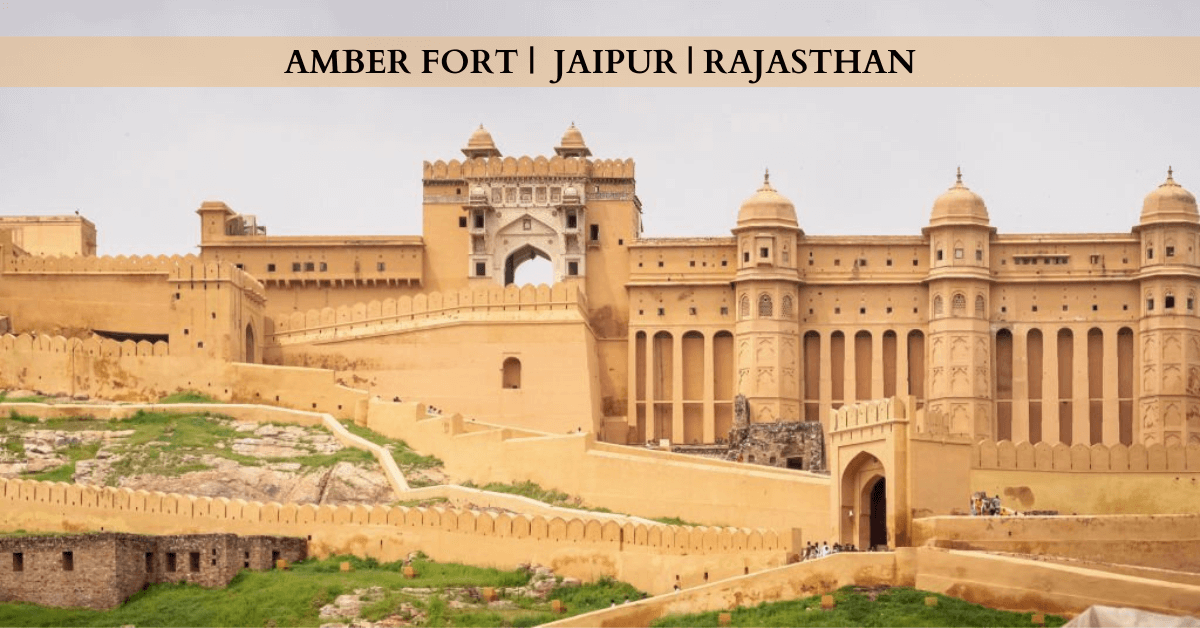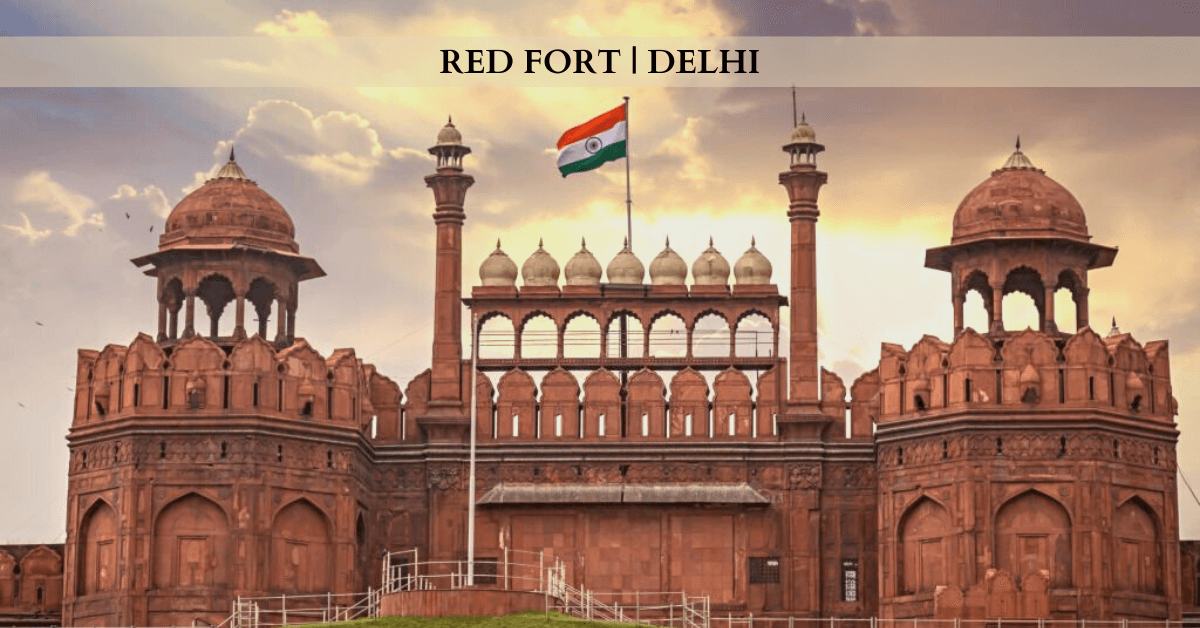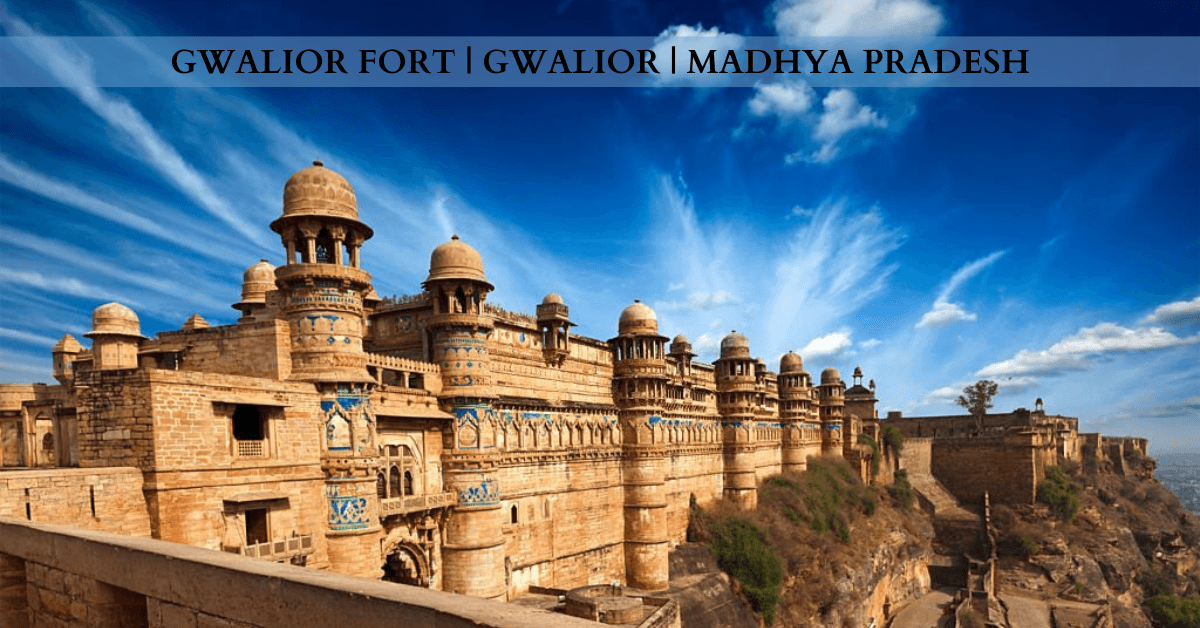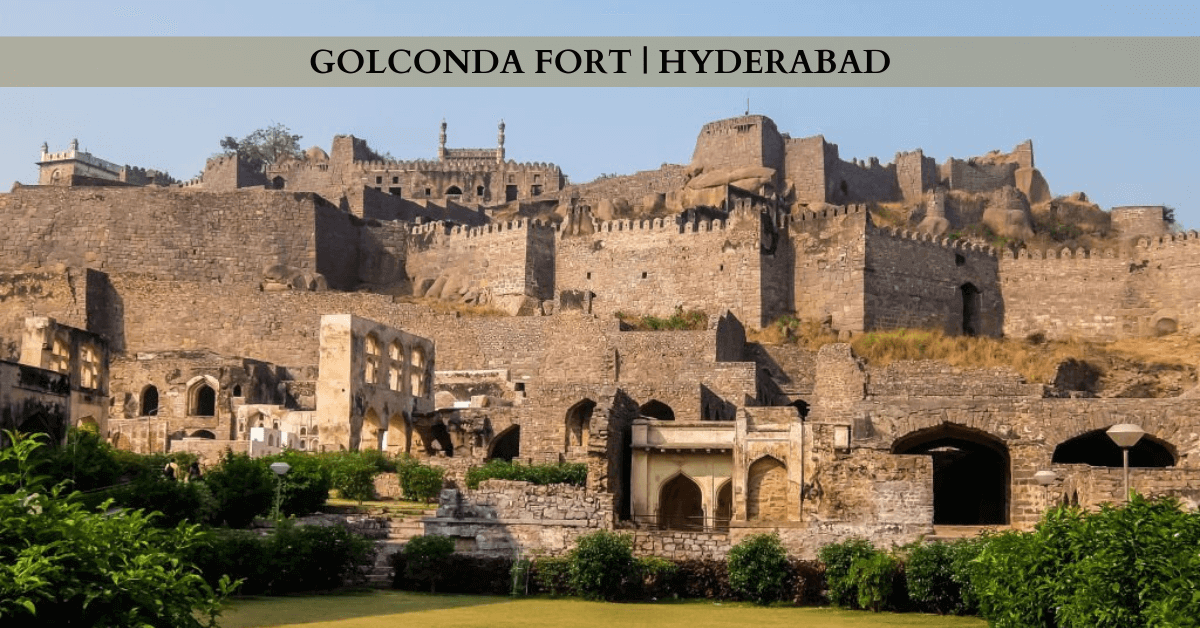
India has long been renowned for its exceptional architecture, rich culture, and artistic heritage. Even though India's religious buildings are highly coveted, little is known about the country's historic military structures. The design of Indian forts had a significant role in the country's pervasive culture of warfare. While some Indian forts were just constructed for defence, other forts were created as symbols of power and dominance. These forts controlled the fate of the kingdoms during times of war and sieges since they were the only barrier separating triumph and loss. They were therefore regarded as symbols of both triumph and slaughter.
Here are India's top 4 forts, whose architecture will amaze you when you visit them.
Amber Fort, Jaipur, Rajasthan
An interesting fusion of Hindu and Mughal architecture can be found at Amber Fort, which is perched on rocky hills outside of Jaipur. The elephant ride up to the main entrance is one of the attractions of this magnificent fort. India's Amber Fort is perhaps the country's most well-known fort. It is located around 20 minutes northeast of Jaipur and receives its name from the little heritage town of Amber (also known as Amer). The fort's construction was started by the Rajput king Maharaja Man Singh I in 1592. It was expanded upon and inhabited by successive kings until Jaipur was created and the capital moved there in 1727. It is presently a popular tourist destination in Jaipur.

The fort is one of six Rajasthani hill forts that were listed as a UNESCO World Heritage site in 2013 (the others are Jaisalmer Fort, Kumbhalgarh, Chittorgarh, Ranthambore Fort, Gagron Fort, and Amber Fort). A wonderful fusion of Hindu and Mughal elements can be seen in its construction. The fort complex is made of sandstone and white marble and has several courtyards, palaces, halls, and gardens. The Sheesh Mahal (Mirror Palace), with its beautifully carved, sparkling walls and ceilings, is often recognized as its most attractive feature.
The Red Fort, Delhi
An ancient fort in old Delhi is the Red Fort, which was built by Shah Jahan. The Red Fort was named a UNESCO World Heritage Site in 2007. The Red Fort has two distinct metaphorical meanings. It serves as a symbol of independent India as well as a reminder of Mughal dominance in India. The structures of the fort include marble and floral ornamentation, a typical Mughal design. Some of its well-known buildings are Mumtaz Mahal, Diwan-i-Khas, and Hira Mahal. At various points throughout history, the Sikhs, Marathas, and British have all inhabited the Red Fort.

Gwalior Fort, Gwalior, Madhya Pradesh
One of the most important tourist destinations in Madhya Pradesh, the old and majestic Gwalior Fort has a long and turbulent history. The history of the fort dates back to 525. It experienced several attacks over the years and had numerous different rulers. The fort did not become well-known or reach its current scale and majesty until the Rajput Tomar dynasty ruled. Between 1486 and 1516, Raja Man Singh Tomar, the monarch at the time, built Man Mandir Palace, one of the fort's most notable features. Rows of yellow ducks and blue mosaic tiles are used to embellish its exterior walls. The fort was afterwards used as a jail by the Mughals while they were in power.

There is a lot to see inside the fort, thus its enormity makes it necessary for you to have transportation. Numerous historical structures, Hindu and Jain temples, and palaces are located inside the complex, one of which, the Gujari Mahal, has been converted into an archaeological museum. The Hathi Pol (Elephant Gate), the fort's most impressive gate, lies on its eastern flank and leads into Man Mandir Palace. Urvai Entrance, the western gate, is easily accessible by car but isn't quite as magnificent. However, don't skip the magnificent Jain sculptures carved into the rock along the way up.
Golconda Fort, Hyderabad
The Golconda Fort Ruins, a treasure trove of heritage, located on the outskirts of Hyderabad, are a popular day trip from the city. The Kakatiya Kings of Waranga constructed the fort in the 13th century; it was once a mud fort. However, it peaked between 1518 and 1687 during the Qutub Shahi dynasty. The architecture of Golconda is a beautiful fusion of Hindu, Turkish, and Persian traditions. The rich cultural tradition that grew under the Qutub Shahis is reflected in it. Massive defences were erected to the fort during their control, giving it its current form. The battlements, bastions, ramparts, and granite walls served as reinforcements for the mud construction. More than 80 semicircular bastions and around 8 entrances were used to fortify the building.

Golconda Fort Ruins gained fame for its diamond market later, in the 17th century. Numerous drawbridges, temples, mosques, royal suites, and halls, as well as stables, can be found in the fort. There are still cannons installed on several of its bastions. Within its several tiers of walls, this fort held a thriving city. Three lines of strong curtain walls, one after the other, surround the structure. The town was bounded by the first wall. The hill on which the fortress was located was encircled by the second wall. The third wall served as a link between the second wall and the natural stones that protruded from the hill's face. The combination of this three-layered defence and the acoustic architectural impact is the pinnacle of advanced defensive systems. This also served to successfully protect the lucrative trade in priceless stones and diamonds that were taken from the nearby mines. The fort's architecture and unique acoustic design make it very intriguing. The main entrance to the fort, Bala Hissar Gate, can be heard more than a kilometer away if you clap while standing in a specific location underneath the dome at Fateh Darwaza (Victory Gate). This served as an assault alert to the royal inhabitants.
The forts of India are still an important part of the country's culture and heritage.
India is home to several other forts, including Murud Janjira, an island fort, Raigad Fort, and Visapur Fort. They are reminders of our rich historical past.
You may also prefer : How Are ACP Sheets Shaping The World’s Architecture?





 en
en
 Spanish
Spanish Arabic
Arabic Swahili
Swahili French
French

